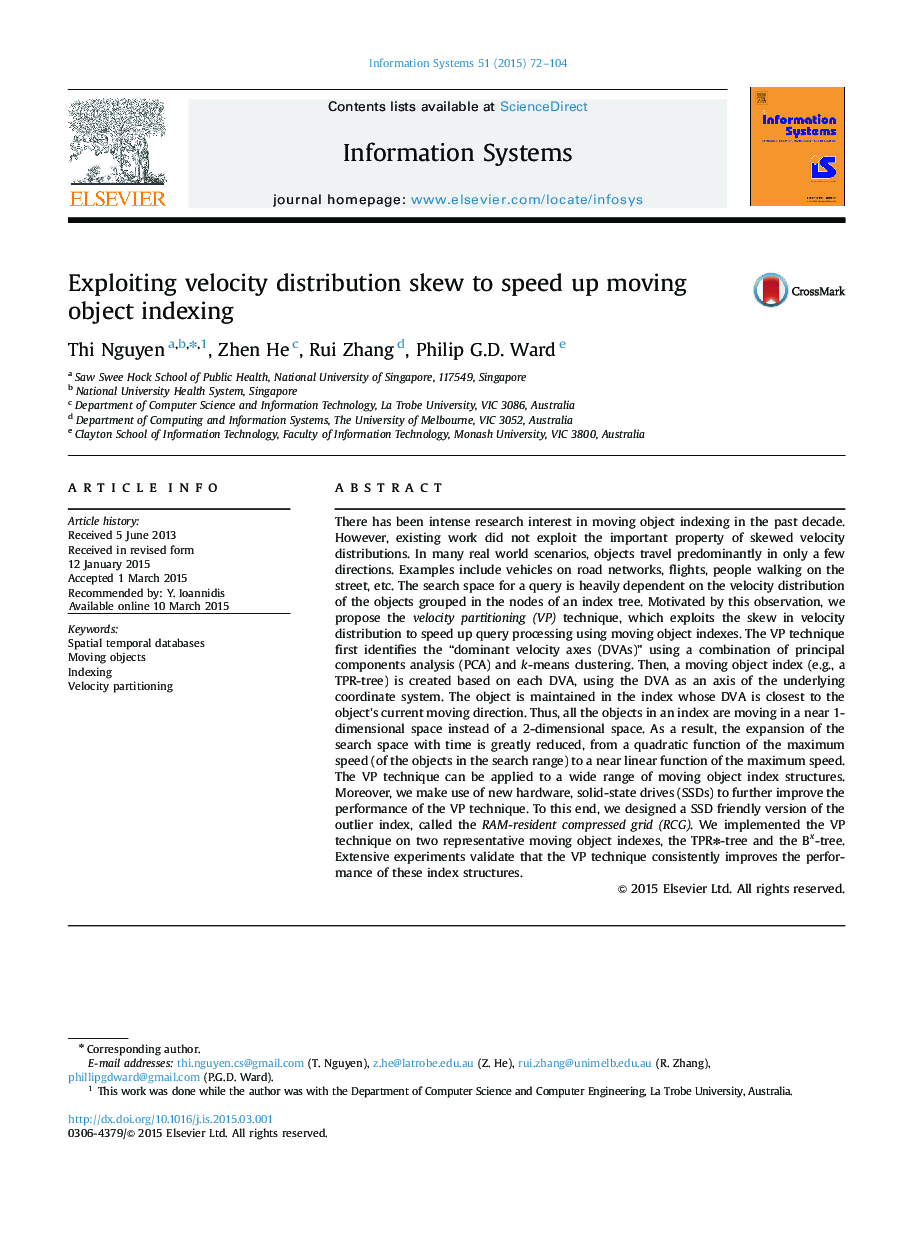| کد مقاله | کد نشریه | سال انتشار | مقاله انگلیسی | نسخه تمام متن |
|---|---|---|---|---|
| 396685 | 670547 | 2015 | 33 صفحه PDF | دانلود رایگان |
Author-Highlights
• Existing work did not exploit the important property of skewed velocity distributions.
• We propose the VP technique exploiting the skew in velocity distribution to speed up query processing.
• We analytically show why a moving object index with VP outperforms a moving object index without VP.
• Our experimental results validate the effectiveness of our approach across a large number of real and synthetic data sets.
There has been intense research interest in moving object indexing in the past decade. However, existing work did not exploit the important property of skewed velocity distributions. In many real world scenarios, objects travel predominantly in only a few directions. Examples include vehicles on road networks, flights, people walking on the street, etc. The search space for a query is heavily dependent on the velocity distribution of the objects grouped in the nodes of an index tree. Motivated by this observation, we propose the velocity partitioning (VP) technique, which exploits the skew in velocity distribution to speed up query processing using moving object indexes. The VP technique first identifies the “dominant velocity axes (DVAs)” using a combination of principal components analysis (PCA) and k-means clustering. Then, a moving object index (e.g., a TPR-tree) is created based on each DVA, using the DVA as an axis of the underlying coordinate system. The object is maintained in the index whose DVA is closest to the object׳s current moving direction. Thus, all the objects in an index are moving in a near 1-dimensional space instead of a 2-dimensional space. As a result, the expansion of the search space with time is greatly reduced, from a quadratic function of the maximum speed (of the objects in the search range) to a near linear function of the maximum speed. The VP technique can be applied to a wide range of moving object index structures. Moreover, we make use of new hardware, solid-state drives (SSDs) to further improve the performance of the VP technique. To this end, we designed a SSD friendly version of the outlier index, called the RAM-resident compressed grid (RCG) . We implemented the VP technique on two representative moving object indexes, the TPR⁎-tree and the BxBx-tree. Extensive experiments validate that the VP technique consistently improves the performance of these index structures.
Journal: Information Systems - Volume 51, July 2015, Pages 72–104
